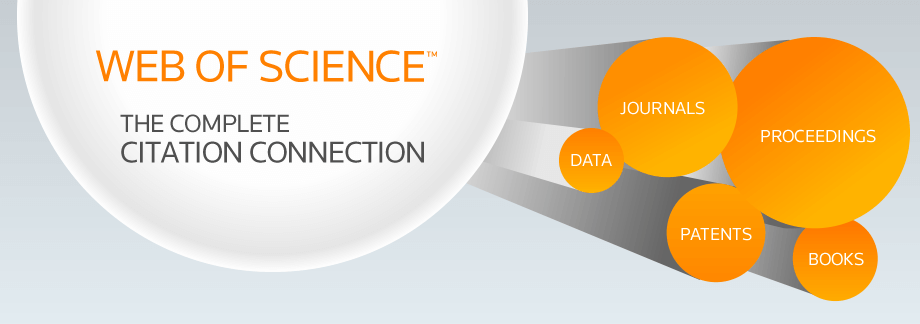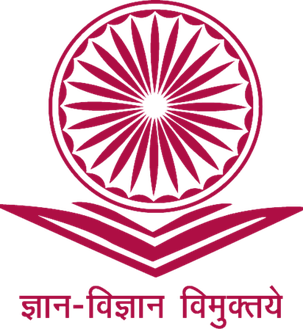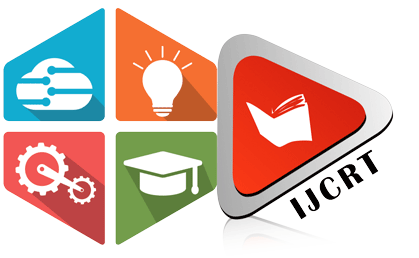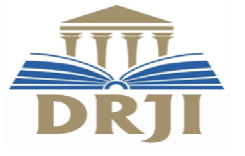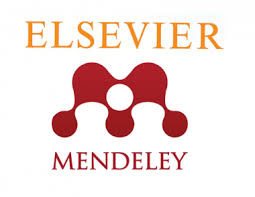INTERNATIONAL JOURNAL OF CREATIVE RESEARCH THOUGHTS - IJCRT (IJCRT.ORG)
International Peer Reviewed & Refereed Journals, Open Access Journal
IJCRT Peer-Reviewed (Refereed) Journal as Per New UGC Rules.
ISSN Approved Journal No: 2320-2882 | Impact factor: 7.97 | ESTD Year: 2013
Call For Paper - Volume 13 | Issue 10 | Month- October 2025
Scholarly open access journals, Peer-reviewed, and Refereed Journals, Impact factor 7.97 (Calculate by google scholar and Semantic Scholar | AI-Powered Research Tool) , Multidisciplinary, Monthly, Indexing in all major database & Metadata, Citation Generator, Digital Object Identifier(CrossRef DOI)
Contact Us Click Here
WhatsApp Contact Click Here
Volume 12 | Issue 3
| IJCRT Journal front page | IJCRT Journal Back Page |
Paper Title: IOT Smart Ambulance: Revolutionizing Emergency Response & Patient Care
Publisher Journal Name: IJCRT
Your Paper Publication Details:
Published Paper ID: - IJCRT24A3077
Register Paper ID - 254270
Title: IOT SMART AMBULANCE: REVOLUTIONIZING EMERGENCY RESPONSE & PATIENT CARE
Author Name(s): Sakthidevi I, Megha s, Hindhu shree G, ABARNA U, Ruba v
Publisher Journal name: IJCRT
Volume: 12
Issue: 3
Pages: j79-j86
Year: March 2024
Downloads: 181
Abstract
The integration of Internet of Things (I0T) technology into ambulance services has ushered in a new era of emergency medical response, promising significant enhancements in both efficiency and patient care. This abstract explores the concept of IOT Smart Ambulances and their role in revolutionizing emergency response and patient care. By leveraging a myriad of advanced technologies and components, including real-time monitoring sensors, robust communication systems, and intelligent data processing platforms, IOT Smart Ambulances aim to optimize resource allocation, improve response times, and enhance patient outcomes. This paper delves into the key features, challenges, and future directions of IOT Smart Ambulances, providing valuable insights for researchers, practitioners, and policymakers in the field of emergency medical services. Through a comprehensive examination of the potential of IOT technology in ambulance services
Licence: creative commons attribution 4.0
License
Keywords
IOT Smart ambulance, Emergency Response, Patient Care, Internet of Things, Ambulance Services, Healthcare Innovation, Real Time Monitoring, Communication System, Data Processing, Resource optimization
License
Paper Title: Machine Learning Based Real Time Twitter Sentiment Analysis
Publisher Journal Name: IJCRT
Your Paper Publication Details:
Published Paper ID: - IJCRT24A3076
Register Paper ID - 253841
Title: MACHINE LEARNING BASED REAL TIME TWITTER SENTIMENT ANALYSIS
Author Name(s): Mr. Mayur Doifode, Dr. Vidya Dhamdhere
Publisher Journal name: IJCRT
Volume: 12
Issue: 3
Pages: j74-j78
Year: March 2024
Downloads: 178
Abstract
The emergence and spread of infectious diseases often lead to widespread concern and discussion on social media platforms like Twitter. Understanding public sentiment during outbreaks is crucial for health authorities and policymakers to gauge public perception, address misinformation, and implement appropriate interventions. In the case of the Monkeypox outbreak, the analysis of Twitter data using machine learning techniques for sentiment analysis can provide valuable insights into public sentiment and opinions. This study aims to conduct sentiment analysis on a comprehensive dataset collected from Twitter during the Monkeypox outbreak. By leveraging machine learning algorithms, we seek to classify tweets into different sentiment categories, such as positive, negative, or neutral, to discern the general public opinion regarding the outbreak. The sentiment analysis will involve natural language processing (NLP) techniques to understand the sentiments expressed in tweets and quantify the overall polarity of opinions. The dataset comprises tweerts collected during the outbreak period, containing keywords related to Monkeypox. Leveraging machine learning models like Support Vector Machines (SVM), Naive Bayes, or Recurrent Neural Networks (RNNs), we will preprocess the text data, perform feature extraction, and train the models to classify tweets based on sentiment.Understanding the sentiment of the public towards the Monkeypox outbreak from Twitter data can provide valuable insights into community perceptions, concerns, and the overall impact of the outbreak on social media discourse. The findings of this analysis could assist health authorities in devising targeted communication strategies, addressing public concerns, and managing the outbreak more effectively.
Licence: creative commons attribution 4.0
License
Keywords
higher education, sentiment analysis, machine learning, big data, twitter
License
Paper Title: Challenges And Prospects Of Railway Connectivity Between India and Bangladesh
Publisher Journal Name: IJCRT
Your Paper Publication Details:
Published Paper ID: - IJCRT24A3075
Register Paper ID - 254359
Title: CHALLENGES AND PROSPECTS OF RAILWAY CONNECTIVITY BETWEEN INDIA AND BANGLADESH
Author Name(s): Sarvesh kumar, Dr. Sanjay Mishra
Publisher Journal name: IJCRT
Volume: 12
Issue: 3
Pages: j67-j73
Year: March 2024
Downloads: 185
Abstract
Licence: creative commons attribution 4.0
License
Keywords
Hkkjr&ckaXykns'k] jsyos dusfDVfoVh] nf{k.k ,f'k;k] {ks=h; ,dhdj.k
License
Paper Title: An Integrated Approach To Tophaceous Gout With Special Reference To Gambhir Vatarakta : A Case Study
Publisher Journal Name: IJCRT
Your Paper Publication Details:
Published Paper ID: - IJCRT24A3074
Register Paper ID - 253128
Title: AN INTEGRATED APPROACH TO TOPHACEOUS GOUT WITH SPECIAL REFERENCE TO GAMBHIR VATARAKTA : A CASE STUDY
Author Name(s): Prof. Dr. Sachinkumar Sahebrao Patil, Dr. Vaibhav Raju Badgujar
Publisher Journal name: IJCRT
Volume: 12
Issue: 3
Pages: j61-j66
Year: March 2024
Downloads: 156
Abstract
Gout is a metabolic disease that develops when the body's monosodium urate (MSU) and monohydrate crystals cause a pathological reaction in the joint or periarticular tissues. Mostly found in soft tissues like cartilage at different regions of the body or in the connective tissues around joints. The primary anomaly that causes gout is hyperuricemia. Analgesics, anti-inflammatory medications, glucocorticoids, therapy to decrease uric acid, Xanthine oxidase inhibitors, and uricosuric medications are the standard treatments for gouty arthritis. When renal insufficiency, gastrointestinal problems are present, these medications may be hazardous and poorly tolerated. Gouty Arthritis of contemporary medical science, by its similarity in symptoms and etiological factors, can be correlated to Vatapittadhika Vatarakta, characterized by the symptoms like Sandhi Shula (joint pain), Sopha (swelling), Raga (Erythema), Sparshasahatva (Extreme tenderness in affected joints) and Stambha (Joint stiffness). So, it can be correlated to Gouty Arthritis. Classics have reported a number of herbal and herbomineral formulations that are beneficial for gouty arthritis. In this study we describe the successful use of ayurvedic medications in a difficult case involving a 60 year old male patient who had disabling effects on his hands and feet due to polyarticular Tophaceous Gouty Arthritis.
Licence: creative commons attribution 4.0
License
Keywords
Gout, Tophaceous Gout, Vatarakta, Gambhir Vatarakta
License
Paper Title: SEVEN FACES OF THE DEVI: Studying Hindu Mythologies vis-à-vis the Woman Question
Publisher Journal Name: IJCRT
Your Paper Publication Details:
Published Paper ID: - IJCRT24A3073
Register Paper ID - 254102
Title: SEVEN FACES OF THE DEVI: STUDYING HINDU MYTHOLOGIES VIS-à-VIS THE WOMAN QUESTION
Author Name(s): Dr. Devishree Mohapatra
Publisher Journal name: IJCRT
Volume: 12
Issue: 3
Pages: j56-j60
Year: March 2024
Downloads: 194
Abstract
Abstract: ‘The woman question’ is an umbrella term used for the theoretical concerns as well as the social campaigns which surround the discussion of women’s rights and issues. It is to be seen that Indian scholars and educationistsdepend on Western Feminist theory to understand and discuss such issues since the West seems to be taking the credit for giving rise to this phenomenon of social change. However, it is important to understand that Hinduism, in its essentiality, is not gender biased. The different manifestations of the Devi or the Goddess as portrayed in Devdutt Pattanaik’s 7 Secrets of the Goddess unleash a side of Hindu mythologies which has been hidden since the advent of the British rule. The heteropatriarchal face of Christianity contaminated the Hindu philosophies and in contemporary times we have to fall back on the Western discourses of feminism whereas women were always regarded as equal to men in Hinduism as reflected in the mythical narratives of the Gods and Goddesses. The seven faces of the Devi include Adya, the primal female deity; Kali, the violent destroyer; Gauri, the feminine principle; Durga, representing the victory of good overevil; Lakshmi, the preserver; Saraswati, the epitome of wisdom; and Vitthai, the manifestation of the principle that God is one, the feminine and the masculine fused into a single entity. Thus, this paper seeks to explore the contemporary relevance of these representations of the Goddess vis-à-vis the gender discourse.The expected conclusion will be that Hindu religious beliefs didnot essentially disseminategender discrimination. The image of the Goddess as a powerful, self-sufficient, affectionate yet destructive is what every woman today strives to achieve and hence there is a need to go back to history and re-read mythologies to find answers to our questions.
Licence: creative commons attribution 4.0
License
Keywords
Feminism, Gender bias, Heteropatriarchy, Orientalist gaze
License
Paper Title: An Integrated Approach To Takayasu Arteritis With Special Reference To Siragata Vata : A Case Study
Publisher Journal Name: IJCRT
Your Paper Publication Details:
Published Paper ID: - IJCRT24A3072
Register Paper ID - 253134
Title: AN INTEGRATED APPROACH TO TAKAYASU ARTERITIS WITH SPECIAL REFERENCE TO SIRAGATA VATA : A CASE STUDY
Author Name(s): Prof. Dr. Sachinkumar Sahebrao Patil, Dr. Lubna Sadaf Khan
Publisher Journal name: IJCRT
Volume: 12
Issue: 3
Pages: j50-j55
Year: March 2024
Downloads: 184
Abstract
An inflammatory and stenotic condition of medium- and large-sized arteries, Takayasu Arteritis (TA) is characterized by a significant preference for the aortic arch and its branches. The current medical treatments available for this illness are not very beneficial. In this instance, TA was more effectively treated with Ayurvedic intervention. Siragata Vata, or vitiated Vata Dosha damaging the blood vessels, was the Ayurvedic diagnosis in this case. The current medical treatments available for this illness are not very beneficial. In this instance, Ayurvedic intervention proved to be more effective in managing TA.
Licence: creative commons attribution 4.0
License
Keywords
Takayasu Arteritis, Siragata Vata, Vatavyadhi
License
Paper Title: Green IOT Solutions for Intelligent Farming in Ranipet District
Publisher Journal Name: IJCRT
Your Paper Publication Details:
Published Paper ID: - IJCRT24A3071
Register Paper ID - 254169
Title: GREEN IOT SOLUTIONS FOR INTELLIGENT FARMING IN RANIPET DISTRICT
Author Name(s): F.SAMREEN, Dr.S.LAVANYA
Publisher Journal name: IJCRT
Volume: 12
Issue: 3
Pages: j40-j49
Year: March 2024
Downloads: 148
Abstract
Green IoT solutions for intelligent farming using NodeMCU with IoT technology aims to demonstrate the transformative potential of IoT-based System for Monitoring Smart Agriculture's Automated Irrigation practices, elevating the efficiency and productivity of agricultural management. IoT sensors can be used to collect environmental and machine metrics, enabling farmers to make informed decisions and improve every aspect of their work, from livestock to crop farming. The use of Green IOT solutions for intelligent farming will give farmers better control over the process of raising livestock and growing crops, making it more predictable and improving its efficiency. This Project is used to build a Smart Farming System using IoT technologies. The objective of this project is to offer assistance to farmers in getting live data such as temperature, humidity, soil moisture, soil temperature for efficient environment monitoring which will enable them to increase their overall yield and quality of products. The system is powered by NodeMCU and consists of a DHT11 sensor, Moisture sensor, DS18B20 Sensor Probe, LDR, Water Pump, and 12V led strip. When the IoT-based agriculture monitoring system starts, it checks the Soil moisture, temperature, humidity, and soil temperature. It then sends this data to the IoT cloud for live monitoring. If the soil moisture goes below a certain level, it automatically starts the water pump. It also generates Weather forecast details in the cloud Interface. The IOT cloud used for live monitoring the data is Adafruit IO. Adafruit IO is a cloud service that allows you to stream, log, and interact with your data from any device. Adafruit IO is built from the ground up to be easy to use, and it provides a powerful API that is useful for assistance. IoT solutions in agriculture have tremendous potential to improve nearly every facet of farming. By using IoT sensors to collect environmental and machine metrics, farmers can make informed decisions and improve just about every aspect of their work - from livestock to crop farming.
Licence: creative commons attribution 4.0
License
Keywords
Green IOT Solutions for Intelligent Farming in Ranipet District
License
Paper Title: Design and Implementation of a P2P File Sharing System Based on BitTorrent Protocol
Publisher Journal Name: IJCRT
Your Paper Publication Details:
Published Paper ID: - IJCRT24A3070
Register Paper ID - 252835
Title: DESIGN AND IMPLEMENTATION OF A P2P FILE SHARING SYSTEM BASED ON BITTORRENT PROTOCOL
Author Name(s): Akkshita upadhyay, Aashana sahai, Anurag barthwal, Anjali singhal
Publisher Journal name: IJCRT
Volume: 12
Issue: 3
Pages: j35-j39
Year: March 2024
Downloads: 191
Abstract
Peer-to-peer (P2P) file-sharing systems represent a significant departure from the conventional client-server model by embracing the principles of distributed systems. In the traditional client-server approach, a centralized server plays the pivotal role of managing data storage and processing user requests. However, this model exhibits inherent shortcomings. Central servers can become bottlenecks, limiting overall efficiency and scalability, and necessitating substantial infrastructure investments as user loads increase. Furthermore, central servers are susceptible to single points of failure, leading to service interruptions. P2P file sharing, in contrast, operates on the foundation of distributed systems, offering a host of advantages. By eliminating the central server, the system becomes decentralized, with each user's device serving as a node in the network. This decentralization not only eradicates single points of failure but also simplifies the scaling process, as additional users automatically contribute resources, ensuring continued efficiency with network growth. Data redundancy is enhanced in distributed systems, ensuring data availability even in the face of node failures. Users in P2P networks share both data and network resources, optimizing bandwidth utilization and fostering a culture of cooperation where downloaders also contribute by sharing parts of the files they acquire. Moreover, P2P networks, such as those employing the BitTorrent Protocol, optimize data transfer by enabling parallel downloads from multiple sources, thereby reducing download times. These systems provide users with a greater degree of autonomy and control over their data, as there is no central entity monitoring or regulating data flows. In summary, the embrace of distributed systems in P2P file sharing has revolutionized data exchange, introducing a more democratic, efficient, and resilient approach, where users collectively shape the network's performance and determine the direction of file sharing in the digital age.
Licence: creative commons attribution 4.0
License
Keywords
Peer-to-Peer, File Sharing System, BitTorrent Protocol, Distributed Networks.
License
Paper Title: Human Rights and Social Justice
Publisher Journal Name: IJCRT
Your Paper Publication Details:
Published Paper ID: - IJCRT24A3069
Register Paper ID - 253375
Title: HUMAN RIGHTS AND SOCIAL JUSTICE
Author Name(s): Aaiko Tamuk, Dr.Shalini Saxena
Publisher Journal name: IJCRT
Volume: 12
Issue: 3
Pages: j28-j34
Year: March 2024
Downloads: 229
Abstract
Human rights are those that are necessary to safeguard and uphold people's dignity and to establish the circumstances that allow each person to fully express their unique identity. Fair treatment and equal position for all people and social groups within a state or community are central to the idea of social justice. This paper addresses the concept of Human Rights and Social Justice by highlighting the importance of both the terms. Where Social Justice, is a fundamental tenet of prosperous and peaceful cooperation both inside and between nations, human rights are the privileges which comes by virtue of being human. Human Rights has a very wide scope and is not limited to just one nation but is implemented universally. There have been several cases and issues based on these terms, so it is very important to address the need of the human rights and social justice and make people wary about it. Along with the general discussions this paper will also mention the instruments of Human Rights both in international and national sphere. The global pursuit of social justice is rooted in international human rights laws, which ensure fundamental rights and freedom for all individuals, regardless of background. This study explores the symbiotic relationship between these laws and social justice, aiming for a more equitable and inclusive global society.
Licence: creative commons attribution 4.0
License
Keywords
Human Rights, Social Justice, Intersectionality, UDHR, Discrimination, Equality, Violations, Racism, United Nations, Gender, Laws, International Covenants
License
Paper Title: Persona Unveiled: Navigating The Dynamic Landscape Of Personality Rights In the Entertainment Industry Amidst The Deepfake Menace
Publisher Journal Name: IJCRT
Your Paper Publication Details:
Published Paper ID: - IJCRT24A3068
Register Paper ID - 254119
Title: PERSONA UNVEILED: NAVIGATING THE DYNAMIC LANDSCAPE OF PERSONALITY RIGHTS IN THE ENTERTAINMENT INDUSTRY AMIDST THE DEEPFAKE MENACE
Author Name(s): Nishka Shetty
Publisher Journal name: IJCRT
Volume: 12
Issue: 3
Pages: j13-j27
Year: March 2024
Downloads: 209
Abstract
In the last decade Indian Entertainment Industry has seen tremendous growth right from its range of blockbuster content in Cineplexes and OTTs (Over-the-top media services platforms) to the emergence of dynamic individual artists in all sectors of media. This robust commercial growth of the industry has revolutionized the status of the personalities associated with these industries given the massive influencing power and the well-known status to these individuals known as celebrities. The right to publicity, popularly known as personality rights, in its most basic sense is the right to protect, control, and profit from one's image, name, or likeness. There are two discernible facets of publicity rights: first, the right to protect one's image from being commercially exploited without permission, by treating it as a tort of passing off; and second, the right to privacy which entails one's right to be left alone. In India, Personality rights are dealt with within the ambit of Intellectual Property Rights as it was only until recently through the Puttuswamy Judgement in 2017 that the Right to Privacy was declared as a fundamental right Thus, there has been very little development of the right to publicity as a facet of right to privacy in India. As Personality Rights provide well-known individuals or celebrities with the right to safeguard their likeness from being unlawfully exploited by third parties without consent or authorization, at the same time today's contemporary advancements in technology, notably Artificial Intelligence (AI), have ushered in the peril of such rights being compromised through the proliferation of deepfakes. Deepfake technology produces convincing fake media by manipulating visuals and audio using deep learning algorithms. Deepfakes may simulate the behaviors and traits of certain people, including actions or words, by studying and imitating their mannerisms and traits. The advancement of technology has made it difficult to differentiate between authentic and fraudulent content, giving rise to moral dilemmas and potential legal ramifications. This paper will explore the concept and evolution of personality rights /celebrity rights in India, how they differ from the rights associated with an ordinary person whilst comparing the origin and framework of Personality rights in the United States throwing a light on how it has evolved compared to India. This paper will also briefly focus on the emerging threat of the AI- technology of deep fakes its impact on the Entertainment Industry and how it has begun to impact the personality rights of individuals.
Licence: creative commons attribution 4.0
License
Keywords
Personality Rights, Celebrity Rights, AI-Technology, Deepfakes
License
Paper Title: Design of Storm Water Drainage System for Indore City
Publisher Journal Name: IJCRT
Your Paper Publication Details:
Published Paper ID: - IJCRT24A3067
Register Paper ID - 253630
Title: DESIGN OF STORM WATER DRAINAGE SYSTEM FOR INDORE CITY
Author Name(s): Deepak Soni
Publisher Journal name: IJCRT
Volume: 12
Issue: 3
Pages: j1-j12
Year: March 2024
Downloads: 186
Abstract
This project report presents a new approach, with the application of the storm water drainage system made by making use of pervious concrete for recharging of the groundwater table. Pervious concrete is a new type of concrete with high porosity, which is usually used for flatwork applications to allow water to pass through it, and by that, it reduces the volume of direct water run-off from a site and increases the quality of storm water. Due to the high flow rate of water through pervious concrete, rainfall can be captured and percolate into the ground, recharging groundwater, supporting sustainable construction, reducing stormwater runoff, and providing a solution for construction that is sensitive to environmental concerns. This study examines the advantages of using such material to maximize stormwater, minimize flooding, improve water filtration, effective drainage during monsoon and improved efficiency of pavement in Indore by constructing a storm-water drainage system. One of the major reasons for the deterioration of roads is rainwater. During rainfall, part of water flows on the ground surface and part of it percolates through soil mass until it reaches the groundwater below the water table. Due to the percolation of water in the pavement moisture content of soil increases which reduces the bearing capacity of the soil. Thus, the stability of the highway is reduced. Therefore, in this project report, we have shown the complete hydraulic and hydrological analysis for the design of the stormwater drainage system and the advantages of using pervious concrete in it.
Licence: creative commons attribution 4.0
License
Keywords
Stormwater, drainage, pervious concrete, porosity, bearing capacity, hydrologic and hydraulic analysis, filtration and percolation
License
Paper Title: Artificial Intelligence In Medical Diagnostics And Imaging
Publisher Journal Name: IJCRT
Your Paper Publication Details:
Published Paper ID: - IJCRT24A3066
Register Paper ID - 254039
Title: ARTIFICIAL INTELLIGENCE IN MEDICAL DIAGNOSTICS AND IMAGING
Author Name(s): Silpa C S, Sreeji K B
Publisher Journal name: IJCRT
Volume: 12
Issue: 3
Pages: i986-i992
Year: March 2024
Downloads: 137
Abstract
: In recent years, Artificial Intelligence (AI) has emerged as a transformative force in the field of medical diagnosis and imaging. Leveraging advanced machine learning algorithms and deep neural networks, AI systems have demonstrated remarkable capabilities in interpreting medical images, detecting abnormalities, and assisting healthcare professionals in making accurate diagnoses. However, the widespread adoption of AI in medicine also raises ethical and regulatory challenges, necessitating careful consideration of issues such as data privacy, algorithm bias, and accountability. As AI continues to evolve and integrate into clinical practice, collaborative efforts between AI developers, healthcare providers, regulators, and ethicists are essential to realize its full potential while ensuring patient safety and ethical integrity. With the offer assistance of Profound Learning (DL) algorithms, medical imaging innovation presently empowers restorative professionals to identify abnormalities and identify maladies with a higher level of exactness and speed than ever some time recently. This has contributed to critical changes in the exactness of diagnosis, the proficiency of treatment, and the in general quality of understanding care. AI- powered therapeutic imaging is trusted to be in the close future a significant improvement in symptomatic changes and applications that will bring considerable benefits for the medical specialists. Counterfeit insights (AI) procedures in later developments have appeared the potential to quicken the movement of conclusion and treatment of cardiovascular infections (CVDs), counting heart disappointment, hypertrophic cardiomyopathy, intrinsic heart illness and so on. AI has been demonstrated to apply well in CVD conclusion, upgrade adequacy of assistant apparatuses, malady stratification and writing, and result Breast mammograms for cancer location, Pap tests, colon cancer imaging, brain tumor imaging are utilized routinely to check individuals for signs of cancer or precancerous cells that can turn into dangerous tumors. In the last decade restorative professionals have created AI instruments to help screening tests for several sorts of cancer. Without question, fake insights (AI) is the most examined point nowadays in therapeutic imaging inquire about, both in demonstrative and restorative. For demonstrative imaging alone, the number of distributions on AI has expanded from almost 100-150 per year in 2007-2008 to 1000-1100 per year in 2017-2018. Analysts have connected AI to naturally recognizing complex designs in imaging information and giving quantitative appraisals of radiographic characteristics. In radiation oncology, AI has been connected on distinctive picture modalities that are utilized at diverse stages of the treatment. i.e. tumor depiction and treatment evaluation. Radiomics, the extraction of a expansive number of picture highlights from radiation pictures with a high-throughput approach, is one of the most prevalent inquire about subjects nowadays in restorative imaging inquire about. AI is the basic boosting control of handling gigantic number of therapeutic pictures and in this manner reveals illness characteristics that fall flat to be acknowledged by the bare eyes. The goals of this paper are to audit the history of AI in restorative imaging inquire about, the current part, the challenges require to be settled some time recently AI can be embraced broadly in the clinic, and the potential future
Licence: creative commons attribution 4.0
License
Keywords
Artificial Intelligence ,Deep Learning, Machine Learning, Medical Imaging, Radiomics
License
Paper Title: Alterations In The Works Of Literature In Totalitarian Era
Publisher Journal Name: IJCRT
Your Paper Publication Details:
Published Paper ID: - IJCRT24A3065
Register Paper ID - 253768
Title: ALTERATIONS IN THE WORKS OF LITERATURE IN TOTALITARIAN ERA
Author Name(s): Dr. Rituparna Moharana
Publisher Journal name: IJCRT
Volume: 12
Issue: 3
Pages: i980-i985
Year: March 2024
Downloads: 171
Abstract
Abstract: In the Totalitarian sphere, literature is categorised in a dystopian register that is built around a system that imposes values that are upside down. A fictitious pattern on the social-political structure is woven by Marin Preda. A literary work like Life as Prey (1977), which entered the memorialist pattern, indicated both the novelist's worldview and the origins of the fictitious text. A fresh viewpoint on the work is born out of the separation between the world and the I. A phase of the axiological perversion experienced by the dilemmatic creator is represented by the alienation. Literary works typically become chronotypes of the abandonment before a constrictive system of ideas, or parables of the tragism of the modern human. The literary tactics that range from the parodic return to history, the un-solemnization of the discourse, the capitalization of prosaism, to the extravagant mythologizing of the prosaic, manifest the upside-down perspective on the link between logos and existence. Fiction appears to transcend historical narratives in its relationship to reality by crafting a dystopian cosmos that reflects the confines of the human imagination. During a period when political discourse dominated cultural and literary discourse, leading to significant limitations, writers wavered between following societal norms and opting for internal exile as a means of maintaining their dignity, rebelling against authority, and withdrawing from the citadel. In this way, the 1960s and 1980s saw the manifestation of a response to topicality and, with it, a concern for the issues upsetting the existence of a person prepared to constantly relate to history, against the backdrop of some radical shifts in perspective in the daily political theory and praxis, with obvious implications for ethics and aesthetics
Licence: creative commons attribution 4.0
License
Keywords
Key Words: Ideological discourse, Chronotope, Totalitarianism, Tragism
License
Paper Title: SUSTAINABLE RICE-DUCK INTEGRATION FOR CLIMATE RESILIENCE AND ENVIRONMENTAL VERSATILITY
Publisher Journal Name: IJCRT
Your Paper Publication Details:
Published Paper ID: - IJCRT24A3064
Register Paper ID - 253840
Title: SUSTAINABLE RICE-DUCK INTEGRATION FOR CLIMATE RESILIENCE AND ENVIRONMENTAL VERSATILITY
Author Name(s): Dr GEETHA JEBARATHNAM
Publisher Journal name: IJCRT
Volume: 12
Issue: 3
Pages: i967-i979
Year: March 2024
Downloads: 163
Abstract
Rice cultivation with ducks possibly offers biological assistance ,and efficient control of weeds. Present research was conducted to trace the the viability of coordinating duck in rice cultivation for controlling weed pervasions and their effects on efficiency and economic output of the framework. Examination on variety of weeds showed that lush weeds (Echinochola colona, Echinochola crusgalli) and sedges (Cyperus difformis, Cyperus iria, Fimbristylis miliaceae) were predominant in rice during tillering stages, while broad leaved weeds (Ludwigia adscendens, Sphenoclea zeylanica) and aquatic weeds (Marsilia quadrifolia, Hydrilla verticillata) were abundant during dynamic tillering and panicle commencement phases of rice. For two years in a row, field research was done at the experimental farm of Bharath University to trace the impact of duck integration in the transplanted rice crop. The purpose of the experiment was to trace the impact of duck integration performed in three different scenarios: duck herding in puddled fields, duck herding in transplanted fields, and duck herding in both transplanted and puddled fields. The field study was set up using a split plot design with three sub treatments that were replicated three times. All of the treatments utilizing different duck integration techniques led to significantly higher grain and straw yields as well as corresponding reductions in weed metrics attribute to the interactions that result from herding ducks. Duck herding under all procedures involving diverse duck integration techniques dramatically boosted grain and straw yield while concurrently lowering weed characteristics. The interactions that result from herding ducks, the overall weed population was lowered by the combined effects of duck herding in cropped and puddled conditions, cono-weeding, and one-handed weeding, recording 5.77 and 5.67 per m2 during I and II season, respectively. Similarly crop DMP, grain yield and straw yield increased by 15.03 t ha-1, 4.34 t ha-1, and 7.29 t ha-1 during the first season, and 15.3 t ha-1, 4.88 t ha-1, 7.58 t ha-1 during the second season respectively due to duck integration in rice production
Licence: creative commons attribution 4.0
License
Keywords
: (Cono weeding, growing rice, duck herding, , grain yield, straw yield and weed control.)
License
Paper Title: Multilingual Customer Support Using Generative AI
Publisher Journal Name: IJCRT
Your Paper Publication Details:
Published Paper ID: - IJCRT24A3063
Register Paper ID - 253848
Title: MULTILINGUAL CUSTOMER SUPPORT USING GENERATIVE AI
Author Name(s): Payal Dayanand, A K Grace Latha Evangeline, Mayurikaa Sivakumar, Lehari P K
Publisher Journal name: IJCRT
Volume: 12
Issue: 3
Pages: i961-i966
Year: March 2024
Downloads: 188
Abstract
Modern multilingual customer care systems are in high demand due to the world's growing interconnectedness. This study examines how generative artificial intelligence (generative AI) can be used to solve the problems associated with delivering smooth and efficient customer support in a variety of linguistic environments. Our suggested system intends to transform consumer interactions by integrating advanced language models, such as contextual understanding and translation capabilities. This paper explains the architectural details of our all-inclusive multilingual assistance system and provides an overview of its features, advantages, and practical uses. The study sheds light on the paradigm shift in the dynamics of customer assistance and highlights the contribution of generative AI to the development of a service environment that is both linguistically inclusive and responsive to global needs.
Licence: creative commons attribution 4.0
License
Keywords
Language translation, Contextual understanding, Sentiment analysis
License
Paper Title: Speech Audio Emotion Detection Using LSTM
Publisher Journal Name: IJCRT
Your Paper Publication Details:
Published Paper ID: - IJCRT24A3062
Register Paper ID - 253966
Title: SPEECH AUDIO EMOTION DETECTION USING LSTM
Author Name(s): Asjad Moiz Khan, Syed Mohammad Moiez, Sandeep Kumar
Publisher Journal name: IJCRT
Volume: 12
Issue: 3
Pages: i951-i960
Year: March 2024
Downloads: 236
Abstract
This study explores emotion recognition in speech using Long Short-Term Memory (LSTM) networks on the Toronto Emotional Speech Set (TESS) dataset. Mel-frequency cepstral coefficients (MFCC) features are extracted, and an LSTM model is trained with a specific architecture, including Rectified Linear Unit (ReLU) and Linear activation functions in dense layers to get the membership of an audio sample in all the 7 labels and also compare them.The compiled model, utilizing mean squared error as the loss function and the Adam optimizer, achieves a training accuracy of 99% and a validation accuracy of 100%. Notably, our approach includes feature membership analysis, providing insights into the contribution of individual features to each emotion label.This comprehensive analysis demonstrates the efficacy of the proposed LSTM architecture in accurately identifying emotional states in speech, while the feature membership analysis adds a nuanced layer of interpretability to the model's predictions. The success of our approach suggests potential applications in emotion-aware technologies and interactive systems.
Licence: creative commons attribution 4.0
License
Keywords
Speech Emotion Recognition, Emotive Speech dataset, Audio data Visualization, MelFrequency Cepstral Coefficients, Feature Extraction, Long-Short Term Memory Neural Network, Emotion Classification, One Hot Encoding, Loss and accuracy matrices, Prediction Probabilities, Emotion identification, Virtual Assistants, Mental Health Screening, Computer-Human interaction
License
Paper Title: Smart Sole for Posture Correction of the Body
Publisher Journal Name: IJCRT
Your Paper Publication Details:
Published Paper ID: - IJCRT24A3061
Register Paper ID - 254156
Title: SMART SOLE FOR POSTURE CORRECTION OF THE BODY
Author Name(s): Thrambadia Vishal, Dr. Kavitha C, Yuvraj Rai
Publisher Journal name: IJCRT
Volume: 12
Issue: 3
Pages: i946-i950
Year: March 2024
Downloads: 144
Abstract
This essay presents the current innovation, which pertains to smart sole shoes for correcting human posture, consists of a microprocessor inside the sole compartment and a sole with an upper and lower sole. The sole of the shoe may have a vibrator and several weight pressure sensors positioned inside. As a result, while the user is wearing the shoe, the multiple pressure sensors continually gather pressure from all of the weight pressure locations on each foot. The vibrator alerts the user that they are exerting extra pressure on a specific foot when the pressure stays above the threshold value for a predetermined amount of time.
Licence: creative commons attribution 4.0
License
Keywords
Arduino ESP-32, Pressure Sensors, Vibrators, Smart Sole, Posture Correction.
License
Paper Title: A Study On Future Of Ethanol Industry
Publisher Journal Name: IJCRT
Your Paper Publication Details:
Published Paper ID: - IJCRT24A3060
Register Paper ID - 254050
Title: A STUDY ON FUTURE OF ETHANOL INDUSTRY
Author Name(s): Abishek Soni, Manav Chhaganlal Dholu, Chahat Bhansali, Bhuvan Pasari, Aditya Agarwal, M/s Shilpa T Mary.
Publisher Journal name: IJCRT
Volume: 12
Issue: 3
Pages: i933-i945
Year: March 2024
Downloads: 144
Abstract
Fossil fuels are currently the primary source of energy needed by the planet. The hunt for renewable, less harmful energy sources has been fueled by the world's rapidly increasing need for energy and the carbon dioxide emissions that come with using fossil fuels. Among them is regarded as ethanol. It is really regarded as one of the best biofuels for transportation since it can be mixed with gasoline or burnt straight to increase fuel combustion in cars, which lowers CO2 emissions and lowers atmospheric gasses. As a result, research has shifted to the creation of increasingly sophisticated technologies in order to achieve energy sustainability and reduce greenhouse gas emissions. These factors led to the development of two additional production techniques that concentrate on the fermentation of cellulose and hemicellulose mostly from second-generation agricultural wastes and third-generation algae. The facts on the possibilities and applications of producing bioethanol from first, second, and third generation feedstock have been critically analyzed and presented in this chapter.
Licence: creative commons attribution 4.0
License
Paper Title: Self-Compassion and its Role in Enhancing Mental Health and Resilience Among Married Couples
Publisher Journal Name: IJCRT
Your Paper Publication Details:
Published Paper ID: - IJCRT24A3059
Register Paper ID - 254085
Title: SELF-COMPASSION AND ITS ROLE IN ENHANCING MENTAL HEALTH AND RESILIENCE AMONG MARRIED COUPLES
Author Name(s): Princess Lovely Atoki, Ruchi Gautam
Publisher Journal name: IJCRT
Volume: 12
Issue: 3
Pages: i912-i932
Year: March 2024
Downloads: 169
Abstract
Abstract This article explores the potential benefits of mindfulness-based treatments, acceptance and commitment therapy (ACT), compassion-focused therapy (CFT), and cognitive-behavioral therapy (CBT) for married couples seeking to improve their mental health and resilience. The usage of the therapies may help couples become more self-aware, self-compassionate, empathic, communicative, and problem-solving-capable. They may also assist people in developing coping mechanisms to deal with challenging emotions and circumstances. Yet, the effectiveness of these treatments will depend on a person's characteristics, such as their level of sadness or interpersonal problems, as well as their cultural background. In order to best serve each couple's needs and objectives, interventions should be customized. The efficacy of the therapy can be increased by collaboration in its creation and through continual evaluation and monitoring of the outcomes.
Licence: creative commons attribution 4.0
License
Keywords
Mindfulness-based interventions, cognitive-behavioral therapy, married couples, mental health, and resilience
License
Paper Title: Multiple Camera Networks
Publisher Journal Name: IJCRT
Your Paper Publication Details:
Published Paper ID: - IJCRT24A3058
Register Paper ID - 254088
Title: MULTIPLE CAMERA NETWORKS
Author Name(s): Sushanth Buddhala, Dr.Cherukupalli. Mallikarjuna Rao, Vangeti Sravan Reddy, Ch. Jayanth, P. Sri Ram Charan
Publisher Journal name: IJCRT
Volume: 12
Issue: 3
Pages: i900-i911
Year: March 2024
Downloads: 164
Abstract
The Multiple Camera Network (MCN) paradigm revolutionizes visual data capture through strategically positioned interconnected cameras. Deployed in sectors like security, cinematography, and research, MCNs offer panoramic insights. The abstract explores vital MCN components, encompassing synchronization, data fusion, and real-time processing. It sheds light on applications like crowd monitoring, 3D reconstruction, and immersive video production. Despite challenges like calibration and computational needs, the grid-organized MCN excels in synchronized data capture. Surveillance benefits from PTZ and smart cameras, enhancing control and coordination. Object tracking in surveillance hinges on feature extraction and background subtraction, with increasing interest in video surveillance. Embracing edge computing and AI, MCNs gain on-the-fly analysis and predictive modeling. The abstract concludes, highlighting MCNs' adaptability and scalability, positioning them as pivotal in reshaping surveillance and imaging standards from security to entertainment.
Licence: creative commons attribution 4.0
License
About IJCRT
The International Journal of Creative Research Thoughts (IJCRT) aims to explore advances in research pertaining to applied, theoretical and experimental Technological studies. The goal is to promote scientific information interchange between researchers, developers, engineers, students, and practitioners working in and around the world.
Indexing In Google Scholar, ResearcherID Thomson Reuters, Mendeley : reference manager, Academia.edu, arXiv.org, Research Gate, CiteSeerX, DocStoc, ISSUU, Scribd, and many more International Journal of Creative Research Thoughts (IJCRT) ISSN: 2320-2882 | Impact Factor: 7.97 | 7.97 impact factor and ISSN Approved. Provide DOI and Hard copy of Certificate. Low Open Access Processing Charges. 1500 INR for Indian author & 55$ for foreign International author. Call For Paper (Volume 13 | Issue 10 | Month- October 2025)
October 2025
Volume 13 | Issue 10
Last Date :
30-Nov-2025
Submit Manuscript Online Impact Factor: 7.97 Review Results : Within 02-03 Days Paper Publication : Within 02-03 Days

ISSN: 2320-2882 Impact Factor: 7.97 and ISSN APPROVED Journal Starting Year (ESTD) : 2013

ISSN: 2320-2882 Impact Factor: 7.97 and ISSN APPROVED Journal Starting Year (ESTD) : 2013

CONFERENCE PROPOSAL CONFERENCE PROCEEDINGS





